Your team starts the morning checking Slack for urgent messages, switches to email for client communications, opens SharePoint for project documents, jumps to Trello for task management, then bounces between Zoom, Teams and phone calls for meetings. By lunch, they've used eight different platforms just to accomplish basic work activities – and lost countless minutes transitioning between disconnected tools.
This scenario reflects the harsh reality of modern digital workplaces, where the promise of increased productivity through technology often delivers the opposite result. Instead of streamlined workflows, many organizations create digital obstacle courses that exhaust employees and fragment important business processes across incompatible platforms.
When business tools operate in isolation rather than working together harmoniously, the cumulative impact creates significant organizational challenges:
-
-
Context switching between platforms destroys focus and reduces cognitive performance
-
Important information gets trapped in application silos that prevent effective collaboration
-
Duplicate data entry across systems creates errors and wastes valuable time
-
Critical business processes break down at the integration points between different tools
-
Employee frustration increases while actual productivity declines despite technology investment
-
The promise versus reality of digital workplace tools
Digital workplace integration represents one of the biggest disconnects between technology marketing promises and actual business results. Vendors promote individual tools that solve specific problems beautifully, but they rarely address how those solutions fit into broader work environments.
Consider a typical software evaluation process. Marketing demonstrations show how elegantly each platform handles its designated functions. Project management tools display impressive task tracking capabilities. Communication platforms demonstrate seamless message flows. Document management systems showcase sophisticated collaboration features.
The problems emerge when organizations try to combine these best-of-breed solutions into coherent work environments. Suddenly, project updates from the management platform don't appear in communication channels. Document discussions happen separately from the files they reference. Task assignments get disconnected from the broader project context stored in different systems.
Why tools don't naturally work together
Digital workplace fragmentation rarely happens overnight. Organizations typically start with good intentions and logical decisions that eventually create impossible complexity.
A growing company might begin with email and shared drives, then add Slack for team communication. Success leads to more sophisticated needs, so they adopt specialized project management software. Client management requires a CRM system. Document collaboration demands SharePoint or Google Workspace integration. Video conferencing needs evolve from simple tools to enterprise platforms.
Each addition makes sense individually, but collectively they create workflow chaos. Information that should flow naturally between related activities instead requires manual intervention, duplicate entry or complex workarounds that break whenever systems update or change.
The hidden productivity costs
Most organizations dramatically underestimate the productivity costs of disconnected digital workplace tools. The obvious costs – software licensing fees and implementation time – represent only a small fraction of the total impact.
The real costs hide in daily inefficiencies that compound across every employee and every business process. When someone needs to manually copy project updates from management software into communication channels, that's lost time. When document discussions happen through email instead of being preserved with the files they reference, that's lost context. When new employees need separate training for eight different platforms instead of one integrated environment, that's lost productivity multiplied by hiring velocity.
The context switching penalty on productivity
Productivity research consistently demonstrates that context switching – the mental effort required to change between different tasks or tools – creates significant cognitive overhead that reduces both efficiency and quality of work.
When employees switch between disconnected applications, they're not just changing screens – they're changing mental models, interface paradigms and information contexts. Each transition requires time to reorient, remember where relevant information lives and reconstruct the context necessary for effective work.
Measuring the real impact
Studies suggest that context switching can reduce productivity by 20-40% depending on the frequency of transitions and the complexity of the applications involved. For knowledge workers who switch between multiple platforms dozens of times daily, this penalty compounds into massive productivity losses.
The mathematics become staggering when multiplied across entire organizations. A company with 100 knowledge workers losing 25% productivity to context switching has effectively eliminated 25 full-time positions worth of value – without reducing headcount or visible work output. The loss shows up as longer project timelines, delayed responses to clients and general sense that accomplishing simple tasks requires disproportionate effort.
How disconnected tools frustrate employees
Disconnected tools create user experience problems that worsen as organizations add more platforms and as employees develop workarounds to manage the complexity.
Initial workarounds often seem clever – using email to share links between platforms, maintaining personal spreadsheets to track information across systems or developing complex bookmark systems to navigate between different tools quickly. These individual adaptations provide short-term relief but create long-term organizational knowledge that becomes impossible to transfer or scale.
When key employees leave, their institutional knowledge about navigating disconnected systems leaves with them. New employees face longer learning curves not just for understanding business processes but for mastering the complex integration workarounds that experienced staff developed over time.
Integration approaches that create connected workflows
Digital workplace integration requires systematic approaches that prioritize workflow continuity over individual tool optimization.
Unified collaboration platform strategies
The most effective integration approaches center around platforms that can serve multiple functions rather than trying to connect numerous specialized tools. Unified platforms reduce context switching by providing communication, document management, project tracking and collaboration capabilities within integrated environments.
Microsoft 365 and Google Workspace represent mature examples of this approach, offering email, document creation, storage, communication and collaboration tools within unified interfaces that share common design paradigms and data structures.
However, platform unification alone doesn't solve integration challenges. Organizations must still address how these unified platforms connect with specialized tools for customer relationship management, financial planning, industry-specific applications and other functions that require dedicated software.
Workflow automation tools that bridge gaps
Modern automation platforms can create connections between disparate systems that weren't designed to work together. Tools like Microsoft Power Automate, Zapier and enterprise integration platforms can automatically transfer information between applications, trigger actions across systems and maintain data synchronization that reduces manual coordination effort.
Effective automation focuses on eliminating repetitive data entry and ensuring that information flows to where people need it rather than requiring them to hunt across multiple platforms. When project status updates automatically appear in communication channels, when document changes trigger notifications to relevant team members and when client communications get logged in appropriate project management systems, workflows become more efficient and less prone to information gaps.
Email integration as workflow foundation
Email remains central to most business workflows despite the proliferation of specialized collaboration tools. Rather than treating email as outdated technology to be replaced, successful integration strategies recognize email's continued importance and ensure it connects effectively with other business systems.
This integration becomes particularly important for organizations struggling with SharePoint document management chaos where important business discussions happen through email but get separated from the documents and projects they relate to.
Modern email integration can automatically file messages into appropriate project folders, connect email discussions with related documents and ensure that important communications become accessible to relevant team members rather than staying trapped in individual inboxes.
Technology solutions for productivity software integration
Building effective digital workplace integration requires choosing technologies that prioritize interoperability and workflow continuity rather than impressive standalone features.
API-first platforms and integration capabilities
Select business tools based partly on their ability to integrate with other systems rather than just their individual functionality. Platforms with robust APIs (Application Programming Interfaces) can share data and trigger actions across different systems more easily than tools designed as standalone solutions.
API capabilities become essential for maintaining data consistency across platforms, automating routine transfers of information and creating unified user experiences that span multiple underlying systems. When evaluating new software, consider integration requirements as carefully as core functionality.
Connected workplace solutions that actually work
The most successful digital workplace integration strategies combine unified platforms for common functions with thoughtful integration of specialized tools for specific needs.
This might mean using Microsoft Teams or Slack as communication hubs that integrate with project management tools, CRM systems and industry-specific applications. The unified communication platform provides workflow continuity while specialized tools handle functions that require dedicated capabilities.
Platforms that bridge application gaps
Focus integration efforts on the workflows that matter most to your organization rather than trying to connect every possible system. Identify the business processes that involve multiple tools and prioritize seamless integration for those activities.
For most knowledge work organizations, this includes integrating communication with document management, connecting project planning with team coordination and linking client management with service delivery processes. These core workflows affect daily productivity more than peripheral integrations between rarely used systems.
Implementation strategies that minimize disruption
Successful digital workplace integration requires careful planning and phased implementation that minimizes disruption while building momentum toward more connected workflows.
Assessment and planning for integration
Begin by mapping current workflows to understand how information and tasks move between different systems. This mapping exercise often reveals integration opportunities that aren't obvious when examining tools individually.
The assessment should identify both pain points where disconnections create problems and success patterns where existing integrations work well. Understanding what works helps guide broader integration strategies that build on existing strengths rather than replacing everything simultaneously.
Phased rollout approaches that work
Implement integration improvements gradually rather than attempting comprehensive changes simultaneously. Start with the most problematic disconnections that affect many people daily, then expand to broader integration challenges as initial improvements demonstrate value.
Phased approaches allow organizations to learn from early integration experiences and adjust strategies based on real usage patterns rather than theoretical workflow designs. They also provide opportunities to build user confidence and technical expertise before tackling more complex integration challenges.
Training teams on integrated workflows
Help teams understand not just how to use integrated tools but how the integration changes their work patterns for the better. Training should demonstrate workflow improvements rather than just technical functionality.
Effective training shows people how integration reduces their daily frustration with context switching, eliminates duplicate data entry and provides better access to information they need for decision-making. When people understand the personal benefits of integration, adoption becomes natural rather than mandated.
Measuring integration success over time
Digital workplace integration requires ongoing measurement and refinement based on actual user experience rather than technical implementation metrics.
Productivity metrics that reveal real impact
Track indicators like reduced time spent switching between applications, decreased duplicate data entry, improved response times to client communications and faster completion of routine business processes.
These productivity metrics provide more meaningful insight than technical metrics like system uptime or data transfer speeds. The goal is understanding whether integration actually improves work experience and business outcomes rather than just technical functionality.
User satisfaction and workflow effectiveness
Regularly survey users about their experience with integrated workflows and identify remaining pain points that suggest opportunities for further improvement.
User feedback should inform both technical refinements and training adjustments. Sometimes integration challenges reflect configuration problems that can be solved technically, while other issues require different approaches to change management or user education.
Business process improvement measurement
Assess how integration affects broader business processes like client onboarding, project delivery and internal collaboration. The most valuable integration improvements should accelerate business processes rather than just making individual tasks easier.
This measurement helps justify continued investment in integration capabilities and identifies which types of integration deliver the most significant business value for your organization's specific needs and workflows.
The integrated workplace as competitive advantage
Digital workplace integration represents an ongoing capability rather than a one-time project. Organizations that excel at integration develop systems thinking approaches that consider workflow continuity as carefully as individual tool functionality.
Start by focusing on your organization's most critical workflows and ensuring those work smoothly before addressing peripheral integration challenges. Build momentum by solving obvious pain points that affect many people before tackling complex technical integration projects.
Remember that integration serves the larger goal of organizational effectiveness. When business tools work together seamlessly, teams spend more time creating value and less time wrestling with technology barriers that fragment their attention and energy.
The integrated workplace enables people to focus on meaningful work rather than managing the complexity of disconnected systems. This focus translates directly into better business results and more satisfying work experiences for everyone involved.










